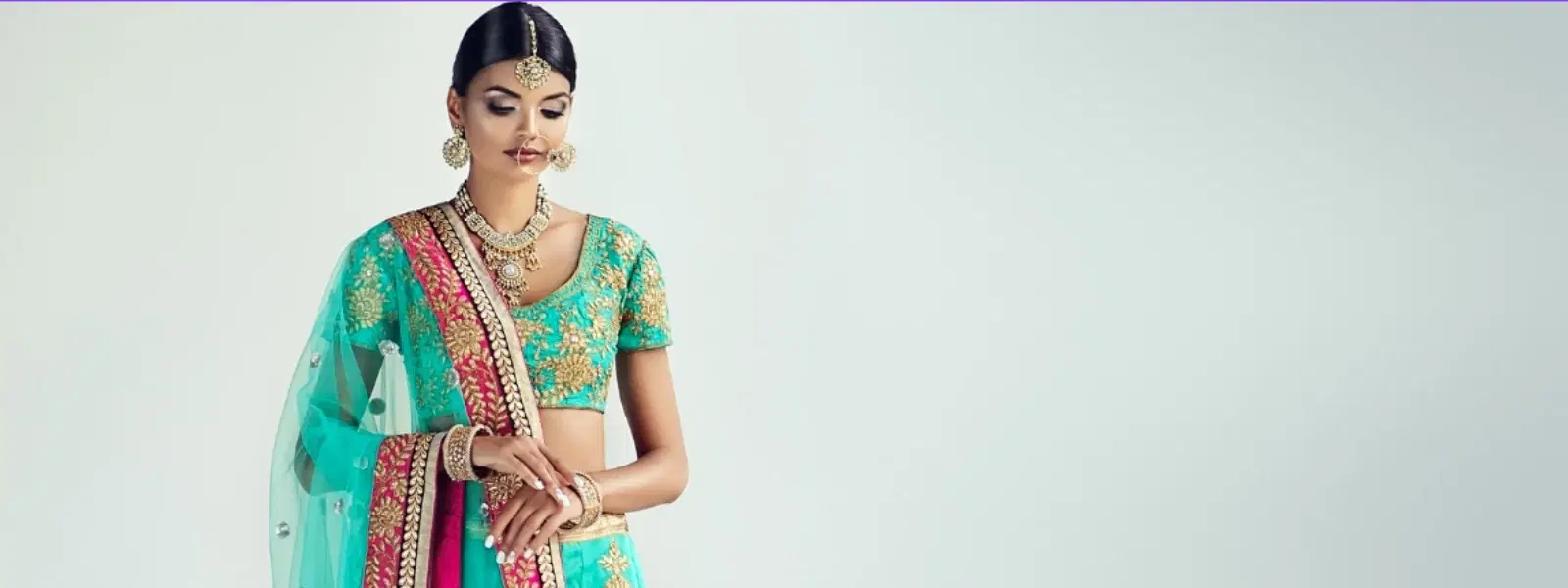
Apparel & Accessories
•04 min read
-b4b0ee01-7102-4782-b4cc-72450eaeb58c.png&w=3840&q=75)
Lehengas have always been a symbol of grace and style, and the addition of cancan can take your look to a whole new level. In this guide, we will reveal what is cancan in lehenga, explore its purpose, the types available, and the many benefits it brings to a traditional outfit. Whether you are a bride searching for that perfect dramatic flair or a fashion enthusiast curious about the latest trends, read on to discover how cancan enhances the art of self-expression and craftsmanship.
Cancan is a stiff, net-like fabric used as an underskirt layer in a lehenga to create a flared and voluminous silhouette. Often hidden beneath intricate embroidery or embellishments, this fabric supports heavy designs while adding structure. Using cancan fabric for lehenga helps designers achieve that regal and dramatic look that makes each outfit unique.
The main purpose of cancan in lehenga is to provide volume and enhance the overall structure of the garment. It adds aesthetic appeal and gives the wearer a grand presence during celebrations. The added volume supports embellishments and heavy embroidery, ensuring that every detail is showcased perfectly.
Both cancan and crinoline are designed to add volume but they differ in their construction. Cancan tends to be softer and more flexible, perfectly suited for modern lehengas. In contrast, crinoline is often a stiffer, hoop-like material that was popular in vintage gowns. The difference between cancan and crinoline lies in the material’s flexibility and how each adapts to the wearer’s movement.
There are primarily two types of cancan: light and heavy. Light cancan is used for casual or semi-formal lehengas. It offers a subtle boost in volume without adding much weight, making it perfect for day events. In contrast, heavy lehenga with cancan is ideal for bridal and heavily embellished pieces where maximum flare and support are needed.
Bridal lehengas often feature multiple layers of cancan to create an enchanting, fairytale-like effect. Multiple layers of cancan not only enhance the volume but also balance the weight of the fabric, ensuring that the outfit remains comfortable throughout long celebrations.
The material used for cancan is usually a stiff netting. However, for those opting for a bridal look, higher quality and softer netting is often chosen as the cancan material for bridal lehenga. This guarantees both a graceful appearance and enhanced comfort that lasts through every twirl and spin.
-961388ae-2e6f-4656-ab76-3780ab6a42c4.png&w=3840&q=75)
The volume of your lehenga is largely influenced by the amount of cancan used. For a heavy, dramatic look, several layers are needed. For a lighter, more manageable volume, one layer may suffice. The choice between lehenga with cancan layers or a simpler construction depends on the occasion and desired impact.
If you have a favorite lehenga that lacks depth, adding a cancan petticoat for lehenga is an excellent solution. By stitching a cancan skirt underneath, you transform the garment without the need for complete reconstruction. This method allows you to personalize your look with ease and affordability.
The Secret Behind Twirl-Worthy Lehengas
For a natural and balanced flare, attach the cancan closer to the hemline rather than the waistband. This placement lets your lehenga flow beautifully with every movement, creating that picture-perfect moment.
When you opt for a lehenga with cancan layers, you're choosing a look with dramatic volume—a look that stands out at weddings and festive events. Meanwhile, a lehenga without cancan offers a flowy, understated appearance that suits more minimalist styles. Deciding between the two depends on your style preference and the statement you wish to make.
Pairing your lehenga with a breathable petticoat is essential. This not only adds comfort but also ensures that the cancan remains effective without causing irritation. Wearing the right undergarments can enhance movement and keep you feeling as fabulous as you look.
If you find the cancan material too stiff for comfort, a simple remedy is to soak it in warm water with a hint of fabric softener. This method softens the fabric while retaining its structure, allowing you to enjoy both style and comfort.
-68be3552-55c1-4572-9cbe-6f32de66a775.png&w=3840&q=75)
Proper storage is key to preserving the volume and shape of a lehenga with cancan. Always lay your outfit flat to maintain the form of the cancan. Avoid hanging the lehenga to prevent stretching and consider using a breathable garment bag to shield the fabric from dust and moisture.
If you wish to adjust the volume of your outfit, removing the cancan layers is a feasible option. This reversible process lets you modify the look of your lehenga according to the occasion, making it a versatile piece in your wardrobe.
Cancan helps create a voluminous, structured silhouette. However, it can be omitted for a more natural, flowy look if that is your style preference.
For bridal lehengas, soft net cancan is preferred as it offers volume without sacrificing comfort. Heavy net cancan is better suited for designs that require extra flare.
The amount needed varies with the lehenga’s design and desired volume. Bridal looks may demand two to three layers, while lighter styles generally require just one layer.
Soaking the cancan in warm water with a little fabric softener can make it more pliable and comfortable without reducing its volume.
Cancan is softer and more flexible, tailored for modern lehengas. Crinoline is stiffer and was traditionally used in vintage-style gowns.
Understanding what is cancan in lehenga opens up endless possibilities for creating stunning, voluminous silhouettes. Whether aiming for a grand bridal look with multiple cancan layers or adding a touch of flair to everyday ethnic wear, embracing this design element can transform your style. With attention to detail, proper care, and a clear idea of how to use cancan effectively, you can create a fashion statement that speaks volumes about your personal style.